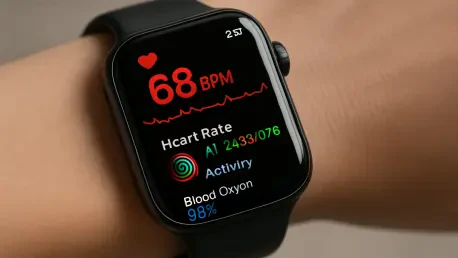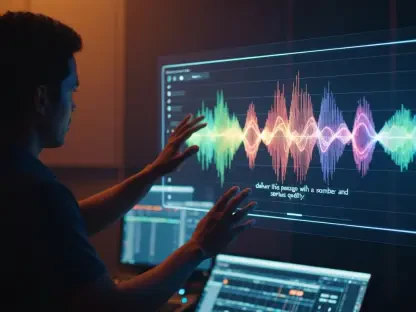I’m thrilled to sit down with Nia Christair, a leading authority in mobile technology with a deep background in mobile gaming, app development, device hardware design, and enterprise mobile solutions. Today, we’re diving into Apple’s latest update, iOS 18.6.1, which marks the return of blood oxygen monitoring on Apple Watch devices after a nearly 18-month hiatus in the US due to a patent dispute. Our conversation explores the intricacies of this reinstatement, the innovative workaround Apple developed, the user experience challenges with the new update, and what this means for the future of health tech on wearable devices. Let’s get started.
Can you explain the backstory behind why blood oxygen monitoring was disabled on Apple Watches in the first place?
Sure, it all started with a patent dispute between Apple and a medical tech company over pulse oximetry technology. Essentially, the claim was that Apple’s implementation of blood oxygen monitoring on the Apple Watch infringed on existing patents. This legal battle led to a restriction on selling Apple Watches with this feature enabled in the US starting in 2023. For the past 18 months, users in the States either had to buy devices without this functionality or couldn’t access it even if their watch had the hardware. It was a significant blow to a feature that many considered a game-changer for personal health monitoring.
How has Apple managed to bring back blood oxygen monitoring with the iOS 18.6.1 update, and what’s different about it now?
Apple came up with a clever workaround to sidestep the patent issue. With iOS 18.6.1 and watchOS 11.6.1, the Apple Watch still collects the raw blood oxygen data, but instead of processing it on the device, it sends that data to a paired iPhone. The iPhone then does the calculations and displays the results in the Health app under the Respiratory section. Before the dispute, you could see your readings directly on the watch face or in a dedicated app on the watch itself. Now, it’s a two-device process, which avoids violating the patents but changes the user experience quite a bit.
What role did regulatory bodies play in approving this new approach to blood oxygen monitoring?
US Customs played a critical part in this. Apple had to demonstrate that their redesigned method—moving the data processing to the iPhone—didn’t infringe on the disputed patents. After reviewing the solution, US Customs gave the green light, allowing Apple to roll out the feature again in the US market. This approval was key to ensuring that Apple could restore the functionality legally while still offering it globally to users on compatible devices.
Which Apple Watch models can take advantage of this restored feature, and are there any specific requirements for users?
Right now, the blood oxygen monitoring is available on the Apple Watch Series 9, Series 10, and Ultra 2. Those are the models with the necessary hardware and software support for this feature under the new system. Users do need to ensure that both their watch is updated to watchOS 11.6.1 and their iPhone is running iOS 18.6.1. Without both updates, the feature won’t work since the data processing relies on the iPhone. As for older models, there’s no indication yet that Apple plans to extend this to them, likely due to hardware limitations or strategic focus on newer devices.
Let’s talk about some of the hiccups users are experiencing with iOS 18.6.1. Can you shed light on the app crashes being reported?
Absolutely, some users have taken to forums and social media to report that apps like Messages and Settings are crashing unexpectedly after installing iOS 18.6.1. This isn’t universal, but it seems to be affecting a noticeable subset of users. It could be related to how the update interacts with existing app data or background processes. These kinds of issues often pop up with major updates as the system adjusts to new code, and Apple typically addresses them with smaller follow-up patches. It’s frustrating, though, especially when paired with a highly anticipated feature return.
Another issue seems to be delays in syncing blood oxygen data. What’s behind that, in your opinion?
The syncing delays are likely tied to the new workflow where data has to travel from the Apple Watch to the iPhone for processing. This introduces additional steps—data transfer, processing on the iPhone, and then updating the Health app. If there’s any lag in Bluetooth connectivity or if the iPhone is busy with other tasks, it can slow down the process. It’s a trade-off for the workaround Apple implemented, but it’s understandable why users find it less seamless than the original on-device processing.
There’s also been backlash about not being able to view results directly on the watch. How are users reacting to this change?
The feedback on this has been pretty vocal, especially on social media. Users loved the immediacy of glancing at their wrist to see blood oxygen levels without needing to pull out their phone. Now, having to check the Health app on the iPhone feels like a step backward in terms of convenience. For some, it disrupts their workflow, especially if they’re using the watch during exercise or in situations where grabbing their phone isn’t practical. It’s a clear downgrade in user experience, even if the data itself is still accessible.
Beyond these specific issues, what broader complaints have you seen about the iOS 18.6.1 update on social platforms?
There’s a wave of frustration online about a few systemic issues. Battery life concerns are huge—some users report their devices aren’t charging properly or are draining faster than before. There are also mentions of devices overheating, particularly on newer iPhone models. Network instability and SIM connection problems have popped up too, which can be incredibly disruptive. These aren’t directly tied to the blood oxygen feature, but they’re coloring the overall perception of the update as buggy or rushed, which is a shame given the significance of the health feature’s return.
Looking ahead, what’s your forecast for the future of health features like blood oxygen monitoring on wearable devices?
I think we’re just at the tip of the iceberg with health tech on wearables. The reinstatement of blood oxygen monitoring, even with its current limitations, shows how committed companies like Apple are to integrating advanced health tools into everyday devices. I expect we’ll see more sophisticated sensors and algorithms in the coming years, potentially monitoring things like blood pressure or glucose levels non-invasively. Legal and patent challenges will continue to be a hurdle, but they’ll also drive innovation in workarounds and new tech. My forecast is that wearables will become even more central to personal health management, possibly even linking directly with medical providers for real-time data sharing. It’s an exciting space to watch.









